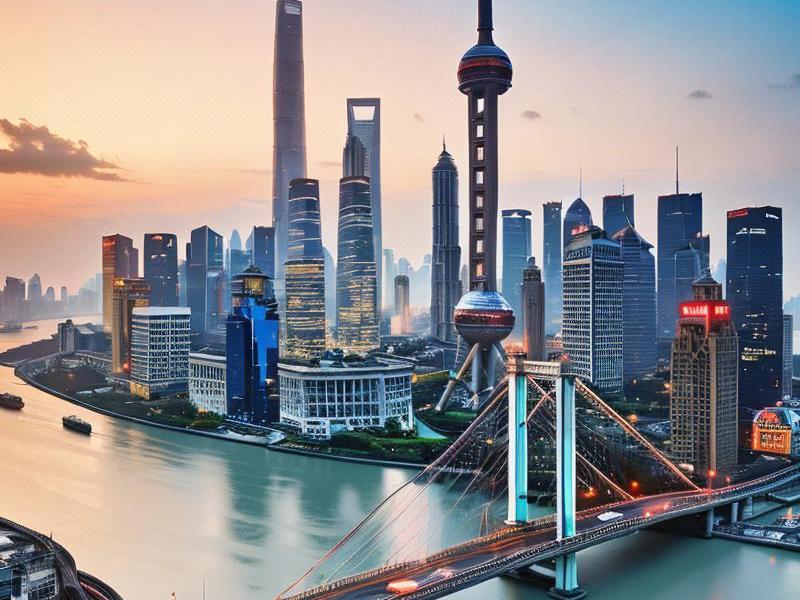This article delves into the vibrant and dynamic region of Shanghai and its surrounding areas, exploring the city's transformation into a global metropolis while preserving its rich cultural heritage. It examines the economic development, urbanization, transportation advancements, and tourism opportunities in Shanghai and the Yangtze River Delta region.

Shanghai, often referred to as the "Pearl of the East," stands as a beacon of modernity and progress in China. As the largest city in the country, Shanghai is a melting pot of cultures, a hub of economic activity, and a testament to China's rapid urbanization. This article takes a comprehensive look at the city and its surrounding areas, highlighting the unique blend of tradition and innovation that defines the region.
The city of Shanghai, with its skyline dominated by the iconic Oriental Pearl Tower and the futuristic Shanghai Tower, is a symbol of China's economic prowess. Located at the mouth of the Yangtze River, Shanghai serves as a critical gateway for trade and commerce, connecting China to the world. The city's strategic location has made it a focal point for international investment and a center for global business.
Pudong New Area, once a rural area on the eastern bank of the Huangpu River, has undergone a remarkable transformation. Today, it is home to some of the tallest skyscrapers in the world, including the Shanghai Tower, which stands at 632 meters. Pudong is also the site of the Shanghai Stock Exchange and the headquarters of numerous multinational corporations. The area's rapid development is a testament to Shanghai's commitment to economic growth and innovation.
The Yangtze River Delta region, which includes Shanghai, Suzhou, Hangzhou, and other nearby cities, is one of the most economically dynamic areas in China. This region accounts for a significant portion of the country's GDP and is known for its advanced manufacturing, high-tech industries, and financial services. The integration of these cities through transportation networks such as the Shanghai-Nanjing High-Speed Railway and the Shanghai-Hangzhou Maglev Train has further strengthened the region's economic ties.
Urbanization in Shanghai and the surrounding areas has been rapid and transformative. The city has expanded its urban footprint significantly, with new districts and satellite cities emerging to accommodate the growing population. This urban sprawl has brought about significant changes in the city's landscape, including the development of modern infrastructure, residential complexes, and commercial centers.
爱上海同城419
Despite its rapid modernization, Shanghai has made concerted efforts to preserve its rich cultural heritage. The city is home to numerous historical sites, such as the Yu Garden, the Old City God Temple, and the Nanjing Road pedestrian street, which offer a glimpse into its storied past. The Bund, with its colonial-era architecture, is another iconic landmark that reflects Shanghai's history as a gateway to the West.
Cultural preservation is not limited to historical sites. Shanghai also boasts a vibrant arts scene, with museums, theaters, and galleries showcasing contemporary and traditional art forms. The city hosts numerous cultural festivals throughout the year, including the Shanghai International Film Festival and the Shanghai Fashion Week, which attract visitors from around the world.
Tourism is a significant contributor to Shanghai's economy, with millions of visitors flocking to the city each year. The Bund and the Pudong skyline are must-see attractions, offering breathtaking views of the city. Visitors can also explore the French Concession, a charming area with cobblestone streets, cafes, and boutiques that exude a European ambiance.
The transportation network in Shanghai is one of the most advanced in the world. The city has an extensive metro system, which provides convenient and efficient travel options for residents and visitors alike. The Shanghai Maglev Train, the world's first high-speed magnetic levitation train, offers a quick and smooth ride from Pudong International Airport to the city center.
上海夜网论坛
The integration of transportation networks in the Yangtze River Delta region has further enhanced connectivity. The Shanghai-Nanjing and Shanghai-Hangzhou High-Speed Railways provide seamless travel between major cities, facilitating business and tourism. The development of waterways and ports has also strengthened the region's role as a global trade hub.
Economic development in Shanghai and the surrounding areas has been driven by a combination of government policies, private sector initiatives, and foreign investment. The city has implemented various strategies to attract businesses, including tax incentives, streamlined administrative procedures, and the establishment of special economic zones. These efforts have resulted in the growth of industries such as finance, technology, manufacturing, and logistics.
Shanghai's role as a global financial center is underscored by the presence of the Shanghai Stock Exchange and the Lingang New Area, which is being developed as a free trade zone. The city is also home to numerous multinational corporations and international organizations, making it a key player in global commerce.
The rapid urbanization and economic development in Shanghai and the surrounding areas have brought about significant challenges, including environmental concerns and social inequalities. The city has taken proactive measures to address these issues, such as promoting green energy, improving waste management systems, and enhancing public services.
419上海龙凤网
Environmental sustainability is a priority for Shanghai, with the city investing in renewable energy projects, urban greening initiatives, and the development of low-carbon transportation systems. The Huangpu River cleanup project is one example of the city's commitment to environmental protection.
Social inequalities are being addressed through education and healthcare reforms, as well as poverty alleviation programs. The city has implemented policies to ensure equal access to quality education and healthcare services, with a focus on marginalized communities.
In conclusion, Shanghai and its surrounding areas represent a unique blend of tradition and innovation, economic growth and cultural preservation, and urbanization and environmental sustainability. The city's transformation into a global metropolis is a testament to China's development and its aspirations for the future. As Shanghai continues to evolve, it remains a symbol of the "Pearl in the East," shining brightly on the global stage.